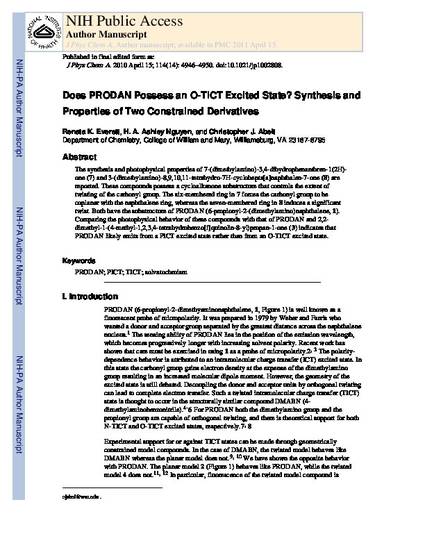
The synthesis and photophysical properties of 7-(dimethylamino)-3,4-dihydrophenanthren-1(2H)-one (7) and 3-(dimethylamino)-8,9,10,11-tetrahydro-7H-cyclohepta[a]naphthalen-7-one (8) are reported. These compounds possess a cycloalkanone substructure that controls the extent of twisting of the carbonyl group. The six-membered ring in 7 forces the carbonyl group to be coplanar with the naphthalene ring, whereas the seven-membered ring in 8 induces a significant twist. Both have the substructure of PRODAN (6-propionyl-2-(dimethylamino)naphthalene, 1). Comparing the photophysical behavior of these compounds with that of PRODAN and 2,2-dimethyl-1-(4-methyl-1,2,3,4-tetrahydrobenzo[f]quinolin-8-yl)propan-1-one (3) indicates that PRODAN likely emits from a PICT excited state rather than from an O-TICT excited state.
Available at: http://works.bepress.com/christopher-abelt/3/
